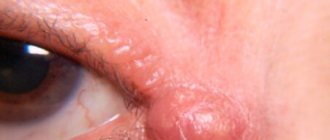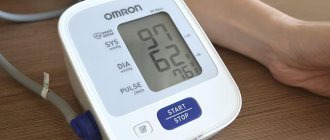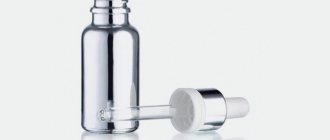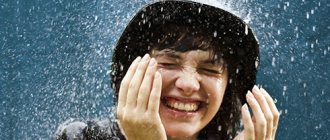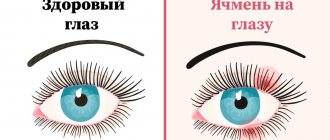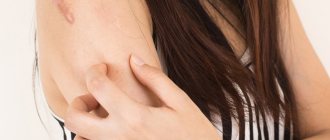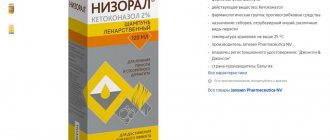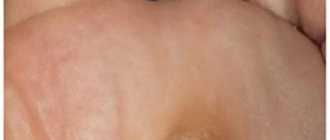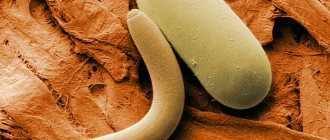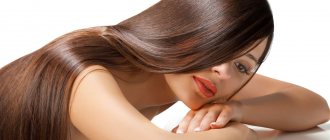Corns are a specific thickening of the surface layer of skin on the feet, often forming during walking. Corns or dry calluses can cause discomfort when moving, and they appear due to frequent mechanical irritation and pressure on the skin of the feet. Repeated rubbing leads to impaired blood circulation in this area and further increases keratinization of the skin.
If you are faced with the problem of corns, do not be upset, since there are many proven ways to deal with this problem. We will look at how to remove corns at home in our article.
You may be interested in: “How to get rid of dark circles under the eyes at home”
1.What are “corns”?
“Calls” are dry calluses on the feet, which are dense, keratinized areas of skin. While protecting the soft tissues of the legs from mechanical stress, they nevertheless cause considerable concern and can cause more severe complications. In addition, needless to say, the delicate smooth skin of the feet is aesthetically more attractive than rough, cracked soles...
Most often, the skin on the feet thickens and dries out at the base of the toes and along the outer contour of the heel. The surface layer of the epidermis dies, forming a rough, yellowish crust. In these places, the sensitivity of the foot is reduced. Further mechanical stress during walking can lead to the appearance of cracks in the corns. If the hardened areas are not removed, wearing shoes becomes quite painful. In places of greatest growth and keratinization of the skin, constant discomfort, pain, and burning are felt.
Cracks can deepen into soft tissue and bleed.
A must read! Help with treatment and hospitalization!
Recipes for home care for feet and heels
Foot baths, compresses and peeling are easy to make yourself using natural ingredients. We are happy to share the most effective recipes.
Foot baths
- Milk-soap bath . Fill a container with warm water at a comfortable temperature no higher than 40 degrees. Add half a liter of milk and a tablespoon of soap crumbs. Take a bath for about 15-20 minutes until the water cools down.
- Bath against profuse sweating . Brew 2 tea bags for every liter of water, wait until the temperature of the “tea” becomes comfortable and dip your feet in the resulting decoction. Black tea has the ability to tighten pores and also contains tannins that reduce sweating.
- Soda bath for corns . Dissolve 2 tbsp in water. spoons of baking soda and 1 tbsp. a spoonful of soap or shower gel. Take a bath for 15-20 minutes. The shower gel in this recipe can be replaced with sea salt, and you can also add your favorite essential oils.
- Lemon bath . Lemon juice destroys the stratum corneum of the skin and works as an acid peel. Dilute lemon juice with water in a ratio of 1:10. Add the resulting mixture to warm water and soak your feet for 10 minutes. Afterwards, rinse your skin with water to avoid drying out.
Home peeling
- Coffee peeling . Ground coffee is one of the main exfoliating ingredients in natural cosmetics. It improves blood circulation and also stimulates the production of collagen and elastin for renewed and firm skin. Mix 1 tbsp. spoon of coffee, 1 tbsp. a spoonful of cocoa and the same amount of cinnamon. Add 150 ml of any oil (olive, grape seed, macadamia) and tbsp. a spoonful of Dead Sea salt. Apply to skin with massaging movements, rinse after 10 minutes. If desired, you can use ready-made coffee scrub “Coffee Cocktail”.
- Classic salt peeling . Mix 50 gr. Dead Sea salt or Himalayan salt with 1 tbsp. spoon of olive oil. Add 5 drops of tea tree or lavender essential oil. Massage the mixture onto your feet and leave for a few minutes. Afterwards, rinse with warm water and apply cream.
- Kefir peeling . Heat 100 ml of kefir to 39 degrees, pour into a bag and lower your feet there for 2 hours. Afterwards, rinse off the residue with water and you can start sanding.
- Citrus peeling . Fruit acids perfectly soften rough skin and saturate it with vitamins. Any citrus fruits that you can find in the kitchen are suitable for peeling: orange, grapefruit, lemon, lime, tangerine. Grind a fruit weighing about 200 grams in a blender instead of peel and seeds. Add a sprig of finely chopped mint. Apply the mixture to rough areas of the skin and leave for 10 minutes, then rinse with water. Repeat acid peeling every week. The Slim Citrus mixture is also suitable for citrus peeling.
Foot compress
- Honey compress for the night . Mix a tablespoon of honey with 2 tablespoons of flour. Form a dense cake from the resulting mass and apply it to the steamed legs, covering the top with film. It is advisable to leave the compress overnight.
- Moisturizing compress with aloe juice . Mix aloe juice with onion juice and olive oil in equal proportions. Apply the mixture to your feet, cover with foil and go to bed.
- Softening compress with vinegar and glycerin . Glycerin is loved by cosmetologists for its ability to quickly heal wounds, moisturize and soften the skin. Mix 2 tbsp. tablespoons of pharmaceutical glycerin with an equal amount of 9% apple cider vinegar. Apply the solution to gauze and apply to areas of rough skin. Leave for several hours or overnight, covering with film and warm socks.
- Onion compress for rough skin on heels . For the recipe you only need one medium onion. Cut it in half, apply it to your heels and secure it with film and leave it overnight, putting socks on top. In the morning, throw away the onion, wash and file your heels.
Mask for feet and heels
- Nourishing potato mask . Mash the warm boiled potatoes with a fork and apply the resulting puree in a thick layer to your feet. Cover with cling film for half an hour, then rinse with warm water and apply your favorite cream.
- Moisturizing oatmeal mask . You will need 2 tbsp. spoons of oatmeal, 2 tbsp. spoons of olive oil and a spoonful of honey. Mix the ingredients thoroughly and apply to your feet. Cover with cling film and rinse with warm water after half an hour.
- Softening mask with semolina . Mix 2 tbsp. spoons of sea salt, 1 tbsp. spoon of honey, 1 tbsp. a spoonful of sour cream and half a glass of semolina. Apply the resulting mixture to your feet for 20 minutes, then rinse with warm water.
- Cleansing mask with Dead Sea salt . Mix Dead Sea salt and olive oil in equal quantities, add a teaspoon of cinnamon. Apply to skin with massaging movements, rinse after 10 minutes.
2.Why do corns form?
We can definitely say that the predisposition to the formation of corns varies from person to person. For each person, a whole complex of external and internal factors is important here. We have to come to terms with those of them that we are not able to completely change:
- The structure of the foot, abnormalities in the development of the legs (flat feet, bone growths);
- Features of the skin;
- Distribution of subcutaneous adipose tissue;
- Condition of the vascular system of the legs;
- Metabolism, individual characteristics of metabolism;
- Hormonal background;
- Chronic diseases and anamnesis.
If you notice a tendency to form corns, first of all, you need to pay attention to what could cause increased stress on the feet. A number of such reasons are varied and can be corrected:
- Occupation that involves walking or standing during the day;
- Lifestyle, hobbies and activity (running, dancing, ballet);
- Tendency to obesity, excess weight;
- Low-fat diet, vegetarianism;
- Avitaminosis;
- Tight shoes, predominantly wearing high-heeled shoes;
- Fungal diseases of the feet.
Visit our Dermatology page
Main skin problems on the feet
A podiatrist is regularly contacted with the following foot skin pathologies:
- calluses;
- cracks of different depths;
- dry skin;
- hyperhidrosis;
- corns;
- hyperkeratosis.
The specialist’s task is not only to identify the presence of pathology and select a method for eliminating it, but also to determine the causes of its occurrence - this will help carry out prevention and prevent the occurrence of pathologies in the future.
3.Prevention of corns
For many people, the problem of corns is chronic.
Folk remedies, cosmetic procedures and foot care bring only temporary relief. In this case, it is worth considering the problem as chronic and approaching treatment comprehensively.
The constant formation of corns always indicates a serious imbalance in the body or disturbances in lifestyle. In this case, the problem should be solved in two ways - along with cosmetic methods, it is necessary to focus on identifying the reasons that cause increased keratinization of the skin of the feet.
Seeking medical help often includes consultations with a dermatologist, orthopedist, and endocrinologist. A systematic approach, the study of anamnesis and lifestyle make it possible to identify the main factors of increased death of epidermal cells. If a connection between corns and health problems is discovered, treatment of the underlying disease always helps to solve the problem with the skin of the feet. The effectiveness of the therapy can be accelerated by local procedures aimed at eliminating skin growths and further prevention:
- Anti-callus plasters;
- Keratolytic cream;
- Hot foot baths;
- Natural and synthetic pumice;
- Softening cream with medicinal herbs.
About our clinic Chistye Prudy metro station Medintercom page!
Which foot bath to choose?
The secret of the effectiveness of the baths lies in their natural composition, rich in magnesia and beneficial acids. The product is ideal for relieving fatigue and swelling, reducing inflammation, relieving pain after sports, moisturizing and nourishing the skin, preparing for a pedicure, as well as for people suffering from skin diseases. Epsom offers two foot baths that may interest you:
Foot bath “Foot Pleasure” with mint and lemon essential oil relaxes, relieves swelling and moisturizes the skin of the feet. A cooling bath will soothe discomfort and relieve swelling after sports or high heels, and the invigorating aroma of mint and lemon will instantly lift your spirits.
Epsom salt relaxes muscles, relieves pain and spasms. Salt removes excess fluid, quickly reducing swelling.
Sea salt relieves inflammation, promotes skin regeneration, healing of calluses and small wounds. Baths with sea salt reduce sweating and stop the development of nail fungus.
Lemon and mint essential oil restores tone to the legs, refreshes and relieves fatigue.
Tea tree essential oil has anti-inflammatory and antiseptic properties, improves blood circulation and fights fungus.
Sage essential oil soothes and heals damaged skin.
Macadamia oil nourishes and softens the skin, moisturizes the cuticle and takes care of the delicate skin of the feet.
Epsom Relax foot bath with chamomile and lavender essential oil nourishes the skin, relaxes muscles and relieves nervous tension. A warm evening bath with the aroma of lavender will give your feet lightness and comfort.
Epsom salts soothe muscles and relieve pain and spasms. Salt removes excess fluid, quickly reducing swelling.
Dead Sea salt relieves inflammation, reduces sweating, promotes the healing of small wounds, and effectively fights fungus.
Himalayan salt softens calluses and corns, accelerates skin regeneration, and tones.
Lavender essential oil soothes the skin and nervous system, helps you relax and fall asleep faster.
Tea tree essential oil has anti-inflammatory and antiseptic properties, improves blood circulation and fights fungus.
Chamomile extract relieves irritation and itching, soothes the skin after insect bites.
Macadamia oil nourishes and softens the skin, moisturizes the cuticle and takes care of the delicate skin of the feet.
4. Treatment of corns
In especially severe cases or when a quick, perfect result is needed, methods of surgical removal of corns are used. Modern aesthetic medicine offers painless and effective procedures for tidying up the feet:
- Laser therapy;
- Cryodestruction;
- Hardware pedicure.
Sometimes corns suddenly begin to form on perfectly healthy feet. In this case, it is necessary to carefully study what has recently changed in your general condition or lifestyle. It often turns out that the cause is new shoes, a change in profession, unusual hobbies, or a change in diet. To solve such problems, it is enough to restore balance in the body, reduce the load on the legs, and adjust the diet. If there is a connection with the identification of any chronic disease, you need to focus on its treatment. Properly selected therapy will have a comprehensive positive effect, and the corns will cease to bother you again as you recover.
Calluses and warts
| Removal of complicated warts and deepened calluses (1 unit) | – | 1500 |
| Removal of complicated warts and deep calluses – level II (1 unit) | – | 2000 |
| Removal of complicated warts and deep calluses – Level III (1 unit) | – | 2500 |
| Removal of complicated warts and deep calluses – level IV (1 unit) | – | 3000 |
| Removal of complicated warts and deep calluses – level V (1 unit) | – | 3500 |
| Unloading dressing (1 unit) | – | 500 |
| Treatment with an antiseptic, applying a bandage when removing the problem area (1 unit) | – | 3500 |
| Removal of callus (1 unit) | – | 3500 |
| Treatment for hyperkeratosis (1 unit) | – | 6500 |
| Laser treatment of the problem area - Level I. (1 unit) | – | 2500 |
| Laser treatment of the problem area - Level II. (1 unit) | – | 3500 |
| Hardware processing - Level I. (1 unit) | – | 1500 |
| Hardware processing - Level II. (1 unit) | – | 2500 |
| Hardware processing - Level III. (1 unit) | – | 3500 |
| Hardware processing | – | 6500 |
Avoid serious problems
A wide range of dermatoses develops in patients with diabetes mellitus. A number of pathologies are harbingers of this disease, others are a consequence. In total, up to 30 types of dermatoses with different clinical pictures are registered in diabetes mellitus.
All of the above diseases require professional and long-term treatment. It is recommended not to let your feet get into a condition that would require going to a hospital or clinic. It is necessary to regularly engage in the prevention of foot skin diseases. To do this you need:
- take care of your feet using products recommended by a cosmetologist;
- keep feet clean and dry;
- wipe the skin between the toes well after hygiene procedures;
- change socks twice a day, do not use synthetic shoes;
- wear only personal items.
People with chronic diseases are recommended to visit a podiatrist once every six months to receive professional care procedures.
How to remove corns at home - folk remedies
I have compiled a list of the most popular traditional medicine techniques into a table. They are safe and easy to prepare.
| Name | How to use |
| Dandelion | Apply juice from flowers and stems to affected areas |
| Raw potatoes | Place the paste on the corns, wrap it in gauze, and keep it there until the morning. |
| Onion | Grind it on a grater and apply it to the corns as a compress. |
| Garlic and lard | Grind a piece of salted lard and a clove of garlic through a meat grinder, secure with polyethylene and a bandage. |
| Aloe | Cut a 3 cm long sheet in half and apply the wet side to the skin. Wrap with film and put on a sock. |
| Celandine | Prepare a decoction, soak gauze in it, wrap your feet, and keep it until the morning. |
| Olive oil | Dampen the cotton slips and place them on your feet. Protect the top with plastic and another pair of socks. Remove after 2 hours. |
| Lemon | Secure the freshly cut slices to the keratinized areas overnight. |
| Propolis | Grind the fresh product (2 g), dilute it in a teaspoon of vodka, soak napkins and wrap the corns. |
Pedicure socks
Corns on the feet - treatment, quick relief (photos will be posted later in the article) from painful calluses is carried out using convenient home methods - can be eliminated using pedicure socks. They are produced in the form of shoe covers made of transparent film. The active ingredient is lactic acid, and the socks are saturated with it.
The composition may also contain hyaluronic acid, castor oil, and soybean oil. Thanks to all these components, the effect of deep peeling and moisturizing of the skin of the feet is achieved. The process of removing corns with this product is quite long, but the result is comparable to a salon procedure. This procedure must be carried out at home according to the instructions.
The general rules are as follows:
- wash, steam and treat your feet with pumice stone;
- open the socks and pour the solution into them;
- carefully put on pedicure socks and another pair of cotton socks on top;
- keep the specified time;
- rinse off the residue with warm water.
The peeling action continues after rinsing. The process takes 5-7 days. At this time, the feet will not look very aesthetically pleasing, since the old skin will be actively replaced by new ones. Do not tear off the peeling skin so as not to damage the new one. In extreme cases, it can be cut off with nail scissors.
The result after such a deep peeling lasts for 3-4 months, then you can repeat this procedure as necessary.
Our specialists
- Kiani Ali
Candidate of Medical Sciences, laser medicine specialist, dermatocosmetologist.
Sign up
- Stepanova Inna Igorevna
Candidate of Medical Sciences, maxillofacial surgeon, specialist in laser medicine.
Sign up
- Fedotova Marina Andreevna
Surgeon, dermatocosmetologist, laser medicine specialist
Sign up
- Popovkin Pavel Sergeevich
Surgeon, oncologist, laser medicine specialist.
Sign up
Cryodestruction
Cryodestruction involves exposing a corn or callus to liquid nitrogen. At a temperature of -196 degrees, the keratinized tissue dies.
Advantages and disadvantages of this type of removal:
- Speed – the procedure lasts from 30 seconds to 2 minutes.
- Painlessness - the only thing you can feel during the procedure is a slight cold. No anesthesia is required.
- Cryodestruction can be performed on children and adults.
- Low risk of infection - dead tissue will begin to peel off within 2-3 days after the procedure. Once the scab falls off, there will be a new layer of skin underneath.
- Cryodestruction does not involve any injuries - under the influence of liquid nitrogen, the vessels are “sealed”, so the risk of various bleedings is eliminated.
- No scars after healing.
The only disadvantages that can be highlighted are the unpleasant sensations during the rehabilitation period.
In addition to all the advantages, this procedure also has contraindications:
- intolerance to low temperatures (which is extremely rare);
- reducing corns on a large area of skin. When there are several large corns on the foot next to each other, and they merge into one, then cryodestruction is impossible, since such a wound will heal for a very long time.
After the callus is removed, wound healing creams are usually prescribed, as well as wearing a special patch to prevent the recurrence of calluses. The procedure is performed only in a clinic by a dermatologist. Prices in different regions range from 700 rubles. up to 2000 rubles, which makes the procedure relatively affordable.
Don't miss the most popular article in the section: Laser hair removal on the face and body - how it is done, effectiveness, before and after photos, contraindications.
